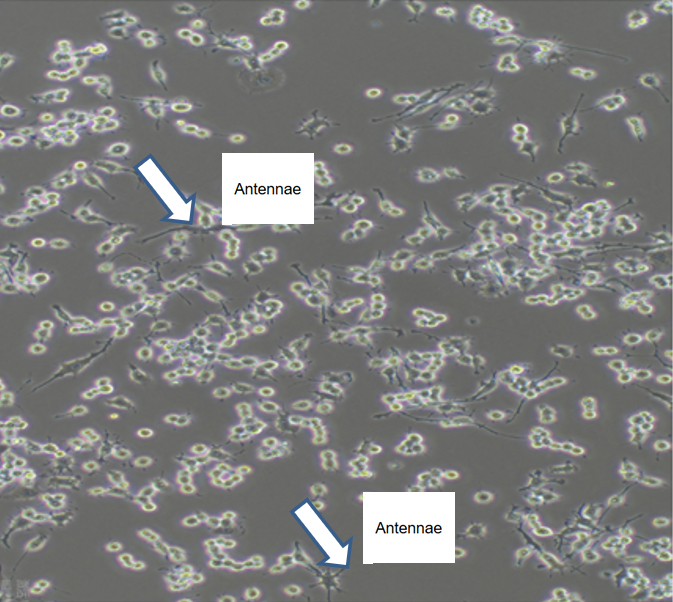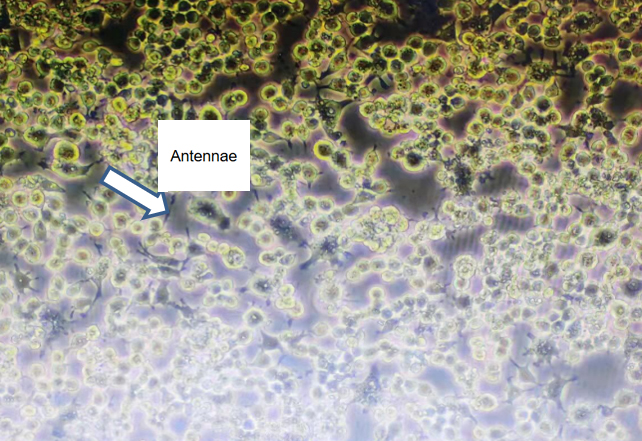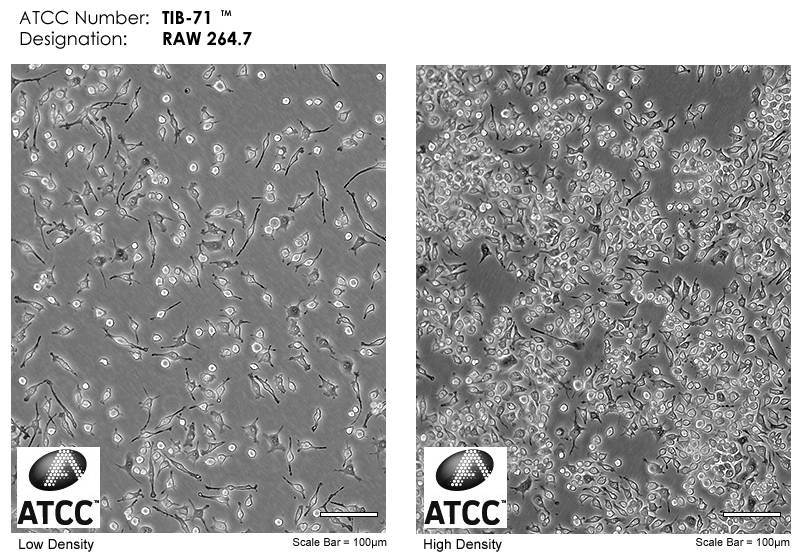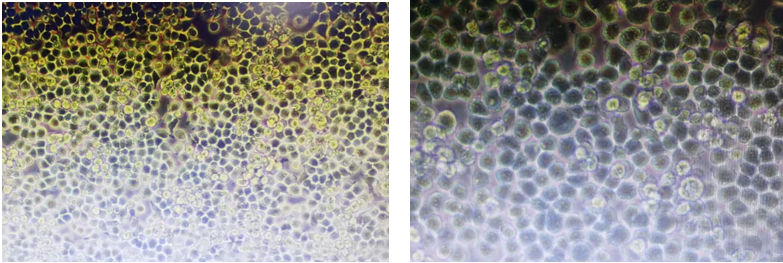HomeProduct ApplicationRAW 264.7 Cell Culture Strategy
RAW 264.7 Cell Culture Strategy
RAW 264.7 cells originate from tumors induced by Abelson murine leukemia virus; under normal culture, the cells exhibit polygonal and irregular shapes, accompanied by the formation of many pseudopods, and they have an extremely strong ability to adhere to the wall. RAW 264.7 cells are immune cells with multiple functions and are an important subject for studying cell phagocytosis, cellular immunity, and molecular immunology. They are irregular in shape, adherent to the wall; the cell growth rate is fast, and they can be passaged every 2-3 days; the nutrient system is DMEM + 10% FBS.
Table 1 Basic Information of RAW 264.7 Cells
|
Name
|
RAW 264.7 (Mouse Monocyte-Macrophage Leukemia Cells)
|
|
Morphology
|
Irregular shape
|
|
Growth characteristics
|
Adherent; fast cell growth rate, passaged every 2-3 days
|
|
Nutrient system
|
DMEM (abs9483) + 10% FBS (abs972) + 1% PS (abs9244)
|
Figure 1 RAW 264.7 (Mouse Monocyte-Macrophage Leukemia Cells)
First, we discuss the first major issue, which is the stimulation and differentiation of RAW 264.7 cells by trypsin digestion. As shown in Figure 2: RAW 264.7 cells digested by trypsin exhibit obvious differentiation, appearing polygonal with longer pseudopodia.

Figure 2 Differentiated RAW 264.7 (Mouse Monocyte-Macrophage Leukemia Cells)
How to avoid cell stimulation and differentiation due to trypsin during passaging, scraping is a more appropriate method. Pour off the cell culture medium, add PBS warmed to 37°C, then scrape the cells. Hold the cell scraper between your index finger and thumb, ensuring the rubber head of the scraper is parallel to the dish surface, and gently scrape with wrist strength (note to use wrist strength, not arm strength), remember to scrape only once, do not scrape back and forth or repeatedly, and the blowing force must be gentle, avoid violent blowing.
Next, we discuss the second situation, which is why RAW 264.7 cells aggregate severely after changing the batch of serum? As shown in Figure 3: RAW 264.7 cells that aggregate severely after changing the serum batch, distributed in flaky parts, with obvious intervals between the layers.

Figure 3 RAW 264.7 (Mouse Monocyte-Macrophage Leukemia Cells) with severe aggregation after changing serum batches
If you happen to encounter this situation, it might be helpful to understand the differences between serum batches: Serum is derived from animals, and its composition consists of about 1000 components, which often vary with the age, physiological conditions, and nutritional conditions of the blood-supplying animals. The percentage content of each batch is not fixed, so batch-to-batch differences do exist. RAW 264.7 cells inherently have the characteristic of growing in clusters, but severe aggregation may be stimulated by certain factors in the serum.
How to prevent cell aggregation caused by serum batch differences?
First, use a trial version of the serum. If the trial effect is good, you can purchase the regular version with the same batch as the trial version, and stockpile enough for half a year or a year, effectively avoiding the impact of batch differences on cells (fetal bovine serum can be stored at -20°C for up to 5 years).
Finally, let's discuss the third major issue: does the presence of differentiated cells indicate poor cell condition? As shown in Figure 4, there are individual cells with pseudopodia in the cell group.

Figure 4 Individually differentiated RAW 264.7 (Mouse Monocyte-Macrophage Leukemia Cells)
It's worth mentioning that during culture, it's impossible to ensure 100% no differentiation. By passaging, the differentiation ratio can be controlled within a certain range. RAW264.7 cells grow quickly, and can be passaged every 2-3 days. If the interval between passages exceeds 3 days, differentiation is more likely, making it difficult to detach. Each inoculation density must be well controlled. The recommended passage ratio is 1:3 to 1:6; recommended passage time: 2 to 3 days; recommended passage confluence: 80%-90%.
After seeing so many cells with long pseudopodia, let's take a look at the "good-looking" RAW 264.7 cells. As shown in Figures 5 and 6, well-grown RAW cells do not differentiate even when the confluence is high, with clear cell boundaries, each cell looking plump and ready to "sacrifice" for human life science research.
Figures 5 and 6 Well-grown RAW 264.7 (Mouse Monocyte-Macrophage Leukemia Cells)
That concludes today's presentation. For the next session, which type of cell culture strategy would you like to learn about? Or if you have any questions regarding cell culture, feel free to contact us!
Absin provides antibodies, proteins, ELISA kits, cell culture, detection kits, and other research reagents. If you have any product needs, please contact us.
|
Absin Bioscience Inc.
Email: worldwide@absin.cn
|
 Follow us on Facebook: Absin Bio Follow us on Facebook: Absin Bio |
January 02, 2025
Clicks:379





 Follow us on Facebook: Absin Bio
Follow us on Facebook: Absin Bio